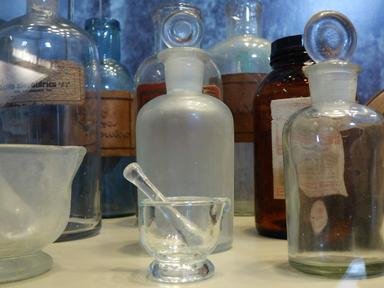Quiz Answer Key and Fun Facts
1. Which of the following elements serves as the primary fuel for a star?
2. Deep in the core of a star, there is so much heat and pressure that elements start fusing together. What element is the first to be created via fusion?
3. As older stars burn through their fuel, they will begin to produce atoms of carbon in their cores.
4. Your pockets may contain a few items that contain carbon. Which of these four items does NOT contain carbon?
5. Eventually, a star's core will begin producing an element that is absorbed via respiration by humans and animals. Which element am I talking about?
6. In your pockets, you may be holding a bottle containing dihydrogen monoxide. What is this molecule more commonly known as?
7. There is a limit to the number of elements that can be fused inside of a star's core. Which element is at this limit?
8. Once a star reaches the fusion limit within its core, it will die. In the case of very massive stars, the star explodes. What is this phenomenon called?
9. Chances are you may have a few coins in your pocket. The elements contained in those coins may have been created before the solar system ever existed.
10. Stick your hands inside an empty pocket. Wiggle your hands around. Is there stardust in your pocket right now?
Source: Author
RedHook13
This quiz was reviewed by FunTrivia editor
rossian before going online.
Any errors found in FunTrivia content are routinely corrected through our feedback system.
